Cultural Connections
Ethnic Studies classes attend field trip to Chicano Park
Ethnic Studies student walks under mural in Chicano Park after being told to explore the area for 45 minutes. She continues to walk around looking at the murals displayed in the park under the Coronado Bridge Highway.
July 15, 2022
On May 18, Ethnic Studies teacher Don Dumas took 33 of his students on a field trip to Chicano Park. Since they were learning about the park in class, Dumas wanted to show his students the national landmark that is filled with colorful murals.
“When I was teaching the classes about the Chicano movement, the majority of the class was shocked to find out about Mexican-American activities and participation in the civil rights movement,” Dumas said. “They never heard that before, and many of them are seniors, so that’s when I decided to bring them here on the field trip.”
Dumas had been planning the trip for his students for four months. At an Ethnic Studies teacher meeting, he brought up taking his student to Chicano Park to the other teachers in the district. A few of the other teachers thought it would also be a good opportunity for their students, so they agreed to go. Dumas wanted to emphasize the importance of learning “about the struggles of historically marginalized people, particularly because most of my students are from historically marginalized groups.”
“You have to be able to identify yourself in history [by] doing something positive and constructive. For too long, the historically marginalized groups are only taught about their victimization. It’s important they know about where they resisted that injustice and won, and not just the injustice that they face,” Dumas said. “[My students] are going to face injustice and hardships in their life. It’s my hope that they find strength in these stories of the past of people that look just like them.”
Dumas and the other Ethnic Studies teachers from Otay Ranch High, Montgomery High and Castle Park High planned to go together with a tour guide on Tuesday, May 18. Unfortunately, a challenge arose when Dumas experienced a miscommunication with the other teachers as the months went by. As a result, the date of the field trip was rescheduled to the following day, Wednesday, May 19.
“The [Ethnic Studies teachers] made arrangements with the tour guide to come on Wednesday. The tour guide couldn’t do it both days, so we had to come without a guide,” Dumas said. “I was hoping that we would have a guide, but we made it work. I still think it was worthwhile.”
Dumas and his students arrived at Chicano Park in one bus. They stood under the bridges as sounds of cars driving on the freeway surrounded them. He began telling them about the history of how the park came to be.
“What stood out to me was learning about the junkyards and things the government was trying to build here after they promised they were going to build a park,” Ethnic Studies student and senior Mharck Cruz said. “That sucks and it’s good that the [community of people] fought for [the park to be built].”
When teaching the students the historical aspects of the park, Dumas hoped they learned about the power of communities because, in Chicano park, this sense of community served as the foundation of the park’s creation. Many members of the community acted quickly and joined together to prevent the government from building a station.
“I hope learning that the [community] came like that (snaps his finger), once they heard the California Highway Patrol station was going to be built here; they built the human fence to prevent the bulldozers from working,” Dumas said. “I hope [my students] learn about that power of community because I want them to always feel like they belong to a community.”
After Dumas spoke to all the students, he let them “soak it in”’ and “feel the vibes” of the park. Some of them immediately began looking at the colorful and contrasting murals all throughout, while others headed to the playground.
“The art styles [are what catch my eye] because it shows an array of different people, different experiences, gender, sexuality, culture and unity,” Ethnic Studies student and senior Frank Lopez said.
Similar to Lopez, Ethnic Studies student and senior Luz Garcia noticed all the different forms of art that make up the park. Not only were there murals, but also a statue and gazebo in the center.
“I think it’s beautiful how they brought Mexican culture to life here. You see a lot of Aztec paintings. Of course, the kiosco [A gazebo], which is Mayan,” Garcia said. “There’s a statue of [Mexican Revolutionary General Emiliano] Zapata over there. It’s cool how they brought Mexican culture here, even though it’s not [all] from here.
After an hour, Dumas had the students meet back by the bus. Altogether, they walked to Las Cuatro Milpas, a famous old-school Mexican joint and ate on the steps of the Kiosco. Some had burritos while others had tacos. Once Dumas finished his burrito, he told his students about their assignments for the rest of their trip. div
“Anytime you go on a field trip, you want it to be educational. You want to give space for the students to express what they learned,” Dumas said. “We call them reflections, they’re never ‘gotcha moments’, they’re not about correcting grammar. It’s just about expressing your thoughts in writing, so that’s what we’re gonna use as the final.”
Dumas assigned each student to take a picture of a mural they like and describe what the mural looks like, how the mural impacts them and what they learned from the field trip experience.
“I’m going to be writing about one of the murals that captivated the LGBTQ [community] and women. I think it shows inclusivity and how there were people other than cis-straight men involved in historical parts of people’s culture,” Cruz said.
Even though they chose two very different murals, like Cruz, Garcia also hopes to write about the incorporation of people, culture and history of the murals.
“In my reflection, I was thinking [of] writing about the history of Mexico. Like Cuauhtémoc, there’s a mural here where it shows him and the eagle that is in the Mexican flag,” Garcia said. “It’s cool how they incorporated Mexican history because when you’re Chicano you have ties not only to Mexico, your mainland, but also a new life that you’ve started. I think that’s cool how they incorporated both.”
Dumas hopes to read about his students’ thoughts on being inspired and emotionally moved by the murals and history. He believes that his students had a good time on the field trip.
“This is learning history, living in color, in action and in person. I’m sure they learned more today just looking at things on their own, [and] listening to the short lecture I gave to start because their brains are more awake and susceptible,” Dumas said. “When you’re out here and actually seeing [the history of the park]. They’ll probably say it was the best lesson of the whole year.”

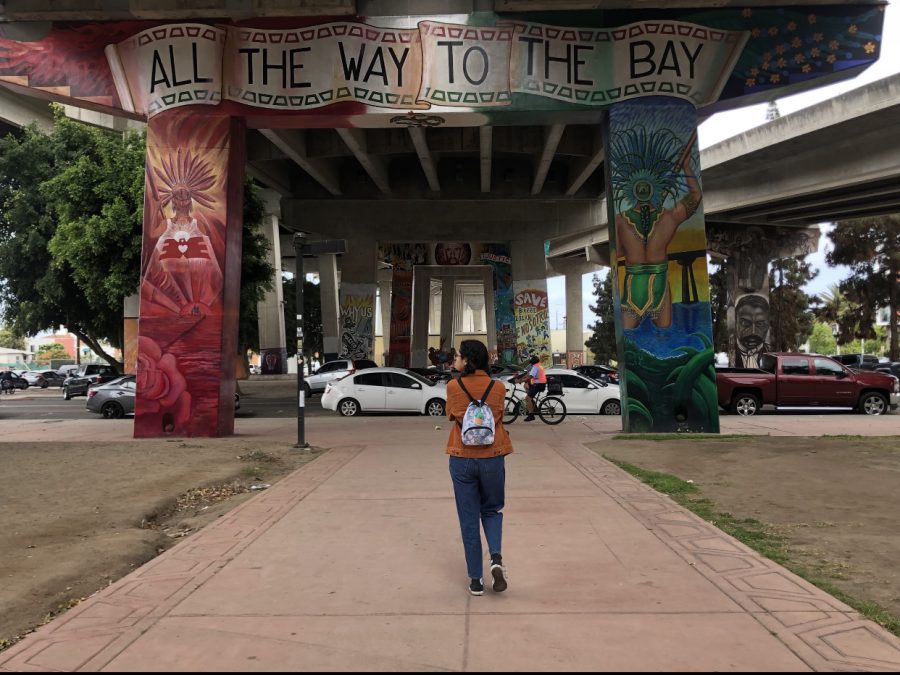
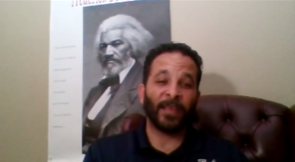
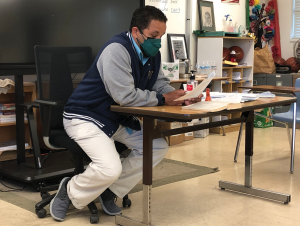
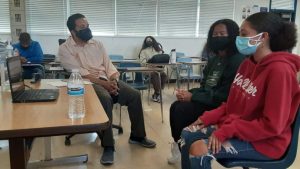
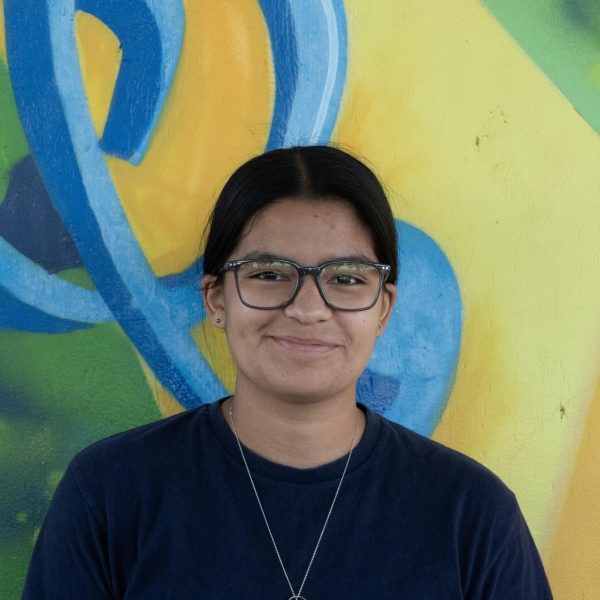
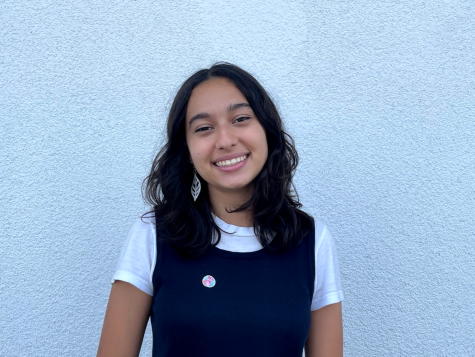
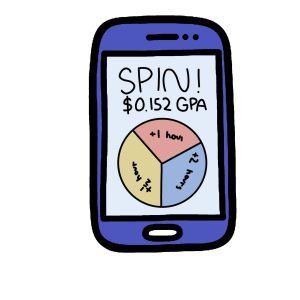

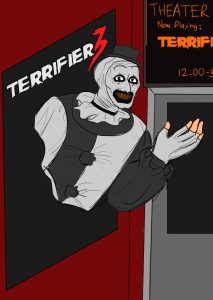
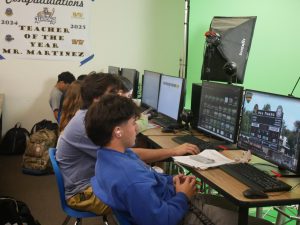
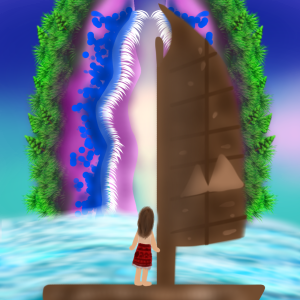
George Garcia • Nov 23, 2022 at 7:50 am
First of all thank you Miss Garcia and Macgaffey for the insightful article into our local culture. I don’t know if Miss Garcia is aware that the area of where the bridge murals are located is only feet away from her own roots. Her great-great-grandmother, Bula Castillo Pina, raised her 13 children in a small house less than 50 yards from the most northern column of the bridge on National Ave. I’m sure the next time talk , we will be revisiting this article a little more in depth.
Finally, Mr. Dumas a very large thank you for encouraging our young adults and in helping guide them to a brighter future.